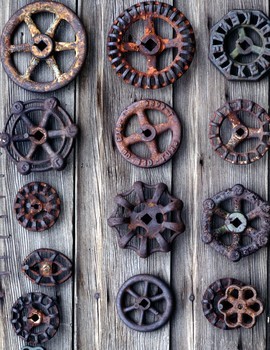
The most simple, antique doorknob design involves the working of an axle or spindle that is screw style passing through the latch. Ideally, these designs have one side totally flat and some pre defined length exposed on either side of the door. Identifying antique doorknobs is easy with the observation of the knobs. Usually they are attached on both sides onto the spindle and secured via a mechanism that holds the set screws perpendicular to the flat side of the spindle. They can be viewed to great detail online and offline and it is advisable to be aware of the design prior to purchase. There is a possibility of the knob losing traction with extensive use, but this can be repaired by replacing the set screw.
Location and Operation of Antique Doorknob
The exact fitting or location-setting of the doorknob varies according to the preference of the home owner. The location may vary in a few centimeters from the frame-work, the exact center of the door and the outer top corner. The variations most of the time are observed to depend on the culture of the place, specific preference and particular decorative style. The back-set or the distance from the edge to the center of the doorknob is defined with exact measurements and precision. Homeowners must keep in mind though that they can be difficult for children and elderly people to operate and hence, the location of the doorknob should be decided on with a lot of consideration.
Interestingly, most varieties were created keeping in mind that in case of lack of a firm grip, then the doorknob could be operated using two hands. The designs are proof of the consideration and the popular operating lever-knob designs available today replicate the antique varieties. Its identification is an important consideration whether the ad-on is for commercial or industrial buildings or for a household. The brass, stone and wooden doorknobs add a touch of class to any ordinary door. The imitations today are also beneficial on doors whose stile widths are narrow. Usually, such doors are observed to have reduced back-set and subsequently insufficient space for the regular counterparts. The designs are many and quite a few are best suited as fittings on narrow-stile-width doors.
Importance of Identifying the Doorknob Material
Antique doorknobs are made of different material. However, the replicates are now made of materials that are known to spread infection on contact like glass, porcelain and aluminum. At the same time, there are some of the modern materials that actually display self-disinfectant features, like replicate antique doorknobs made of brass and silver that are known to be poisonous to quite a few germs! This is possible due to the oligodynamic effect that is a characteristic of these metals. The self-disinfecting doorhandles are essentials in clinics and hospitals. They are also particularly useful in environment catering to the care of infants and toddlers like day care center buildings.
Specific Use
The antique doorknobs are typically used on the exterior side of the doors. These are designed to include key-operated cylinders. In the case of the ones that cater to the need for privacy, the key-operated cylinders are absent. These are used on bedroom and bathroom doors. While they are lockable, they unlock with the help of an unlockable generic tool. Those meant for passages are also referred to as closet doorknobs and do not actually lock. The 'dummy' doorknobs are single knobs, with single screws. They are usually used on ball catch doors or in the absence of any latch mechanism. As the name suggests, the antique doorknob is not needed in the case; it only adds to the appeal that an antique doorknob is credited with.





